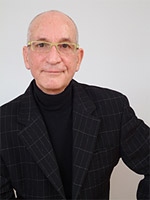
Mr. Gunter Zwarg was born in 1943 in Berlin, Germany. After an apprenticeship as an electro-machine builder, he studied at the Beuth Engineering Faculty in Berlin, where he finished with a Master in Electro-technics in 1965.
After his studies, he worked at the Siemens AG Dynamowerk in Berlin until 2006. He started a career as a freelance consulting engineer, he was mainly involved in cooling the Voith hydro generators in Heidenheim, Baden-Württemberg. He retired in 2021.
After some years working at the Dynamowerk, he was promoted as Lead Engineer for the cooling of large drives and hydro-generators.
Gunter has developed and designed the cooling and ventilation of DC Motors, asynchronous motors (slip ring motors and squirrel cage rotor), synchronous motors (pole-salient and full poles) as well as hydro generators and wind turbine generators.
He has designed the cooling of the following machines: Itaipu, PA4, Inga, Emborcacao, Darthmouth, Leitzach, Scanwind (3MW), Wassen, Keban, Herdecke, Machicura, Colbun, Taquarucu, Tiefencastel, Natpha Jhakri, Gordon, Kinda, Marsyangdi, Tevla
…
Mr. Zwarg was responsible for worldwide customer services, commissioning support, turn-Over Measurements (ventilation, heating and calometrical loss measurements), qualified measurements in the field as well as damage analysis for the following machines: Bhira, Ilha Soltaira, Cartagena, Guangzhou, Häusern, Scanwind (3MW),
Vianden, Dravograd, Inga, Jin Wei Zhou, Froystul….
He was usually in the field, in order to perform ventilation measurements and specially qualified measurements.
He has developed programs for the design of air-to-air heat exchangers and air-to-water heat exchangers. He has supervised CFD flow and thermal calculations as well as the development of heat source networks.
Gunter has extensive experience in the development and use of calculation methods for the cooling of rotating electrical machines. He has recently developed a user-friendly flow network for the cooling of hydro generators, this tool calculates in a physically correct way the pressure drops and the flows for any imaginable ventilation system. The main method was finalized in 2000, the program is still in development for special machines. As part of this tool development, he developed a hydro- generator model reduced to the ratio 1:7.33 for the measurement of flow coefficients and heat transfer coefficients. The part models are used for the determination of the pressure loss coefficients due to the friction and due to geometry changes, these are needed for the Bernoulli equation. This tool could be expanded for hydro generators, wind generators, turbo generators, turbo motors and ring motors.
He worked on several projects for the cooling of salient pole motors with the e-cooling CFD engineering office.